
Aerial Photo of San Diego Coronado Bridge, known locally as the Coronado Bridge, links San Diego with Coronado, California. The bridge was completed in 1969 and was a toll bridge until 2002. It is 2.1 miles long and reaches a height of 200 feet above San Diego Bay. Coronado Island is to the left, and downtown San Diego is to the right in this view looking north.
Image ID: 30762
Image ID: 30762

Aerial Photo of San Diego Coronado Bridge, known locally as the Coronado Bridge, links San Diego with Coronado, California. The bridge was completed in 1969 and was a toll bridge until 2002. It is 2.1 miles long and reaches a height of 200 feet above San Diego Bay. Coronado Island is to the left, and downtown San Diego is to the right in this view looking north.
Image ID: 30763
Image ID: 30763

Snow-covered Mount San Gorgonio, seen beyond Double Peak Park in San Marcos, viewed from Mount Soledad in La Jolla, on an exceptionally clear winter day. Double Peak is about 20 miles away while the San Bernardino Mountains are about 90 miles distant. In the foreground are UCSD (University of California at San Diego, left), Veterans Administration Hospital (center) and Scripps La Jolla Medical Center (right).
Image ID: 37588
Panorama dimensions: 5054 x 16491
Image ID: 37588
Panorama dimensions: 5054 x 16491
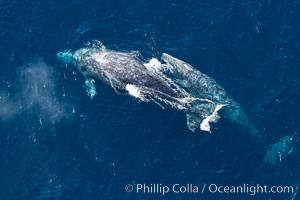
Gray whales traveling south to Mexico during their winter migration. The annual migration of the California gray whale is the longest known migration of any mammal, 10,000 to 12,000 miles from the Bering Sea to Baja California.
Species: Gray whale, Eschrichtius robustus
Location: Coronado Islands (Islas Coronado), Baja California, Mexico
Image ID: 29050
Species: Gray whale, Eschrichtius robustus
Location: Coronado Islands (Islas Coronado), Baja California, Mexico
Image ID: 29050
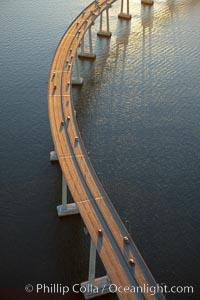
San Diego Coronado Bridge, known locally as the Coronado Bridge, links San Diego with Coronado, California. The bridge was completed in 1969 and was a toll bridge until 2002. It is 2.1 miles long and reaches a height of 200 feet above San Diego Bay.
Location: San Diego, California
Image ID: 22327
Location: San Diego, California
Image ID: 22327
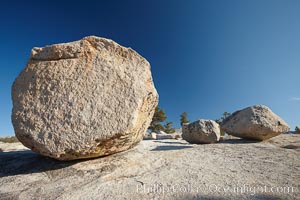
Glacial erratic boulders atop Olmsted Point. Erratics are huge boulders left behind by the passing of glaciers which carved the granite surroundings into their present-day form. When the glaciers melt, any boulders and other geologic material that it was carrying are left in place, sometimes many miles from their original location.
Location: Yosemite National Park, California
Image ID: 23265
Location: Yosemite National Park, California
Image ID: 23265
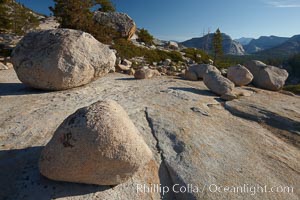
Glacial erratic boulders atop Olmsted Point. Erratics are huge boulders left behind by the passing of glaciers which carved the granite surroundings into their present-day form. When the glaciers melt, any boulders and other geologic material that it was carrying are left in place, sometimes many miles from their original location.
Location: Yosemite National Park, California
Image ID: 23279
Location: Yosemite National Park, California
Image ID: 23279
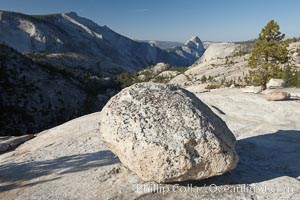
Glacial erratic boulder atop Olmsted Point, with the massive granite monoliths Half Dome and Clouds Rest in the background. Erratics are huge boulders left behind by the passing of glaciers which carved the granite surroundings into their present-day form. When the glaciers melt, any boulders and other geologic material that it was carrying are left in place, sometimes many miles from their original location.
Location: Yosemite National Park, California
Image ID: 23280
Location: Yosemite National Park, California
Image ID: 23280
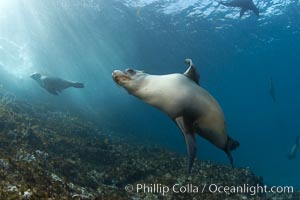
California sea lion, underwater at Santa Barbara Island. Santa Barbara Island, 38 miles off the coast of southern California, is part of the Channel Islands National Marine Sanctuary and Channel Islands National Park. It is home to a large population of sea lions.
Species: California sea lion, Zalophus californianus
Location: Santa Barbara Island, California
Image ID: 23433
Species: California sea lion, Zalophus californianus
Location: Santa Barbara Island, California
Image ID: 23433
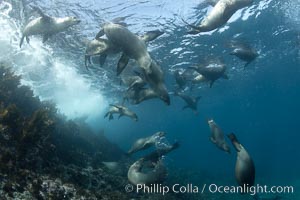
California sea lions, underwater at Santa Barbara Island. Santa Barbara Island, 38 miles off the coast of southern California, is part of the Channel Islands National Marine Sanctuary and Channel Islands National Park. It is home to a large population of sea lions.
Species: California sea lion, Zalophus californianus
Location: Santa Barbara Island, California
Image ID: 23437
Species: California sea lion, Zalophus californianus
Location: Santa Barbara Island, California
Image ID: 23437
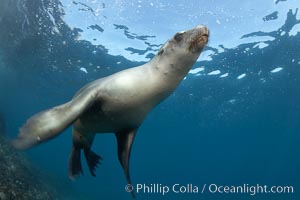
California sea lion, underwater at Santa Barbara Island. Santa Barbara Island, 38 miles off the coast of southern California, is part of the Channel Islands National Marine Sanctuary and Channel Islands National Park. It is home to a large population of sea lions.
Species: California sea lion, Zalophus californianus
Location: Santa Barbara Island, California
Image ID: 23440
Species: California sea lion, Zalophus californianus
Location: Santa Barbara Island, California
Image ID: 23440
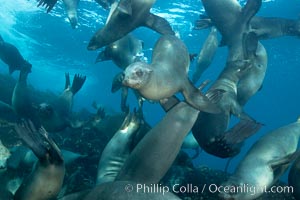
California sea lions, underwater at Santa Barbara Island. Santa Barbara Island, 38 miles off the coast of southern California, is part of the Channel Islands National Marine Sanctuary and Channel Islands National Park. It is home to a large population of sea lions.
Species: California sea lion, Zalophus californianus
Location: Santa Barbara Island, California
Image ID: 23442
Species: California sea lion, Zalophus californianus
Location: Santa Barbara Island, California
Image ID: 23442
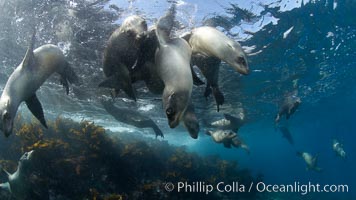
California sea lions, underwater at Santa Barbara Island. Santa Barbara Island, 38 miles off the coast of southern California, is part of the Channel Islands National Marine Sanctuary and Channel Islands National Park. It is home to a large population of sea lions.
Species: California sea lion, Zalophus californianus
Location: Santa Barbara Island, California
Image ID: 23447
Species: California sea lion, Zalophus californianus
Location: Santa Barbara Island, California
Image ID: 23447
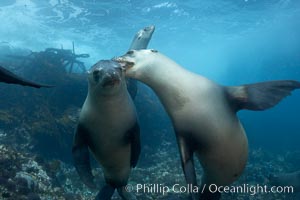
California sea lions, underwater at Santa Barbara Island. Santa Barbara Island, 38 miles off the coast of southern California, is part of the Channel Islands National Marine Sanctuary and Channel Islands National Park. It is home to a large population of sea lions.
Species: California sea lion, Zalophus californianus
Location: Santa Barbara Island, California
Image ID: 23450
Species: California sea lion, Zalophus californianus
Location: Santa Barbara Island, California
Image ID: 23450
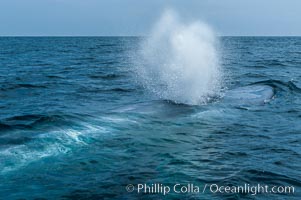
A blue whale blows (exhales, spouts) as it rests at the surface between dives. A blue whales blow can reach 30 feet in the air and can be heard for miles. The blue whale is the largest animal on earth, reaching 80 feet in length and weighing as much as 300,000 pounds. Near Islas Coronado (Coronado Islands).
Species: Blue whale, Balaenoptera musculus
Location: Coronado Islands (Islas Coronado), Baja California, Mexico
Image ID: 09504
Species: Blue whale, Balaenoptera musculus
Location: Coronado Islands (Islas Coronado), Baja California, Mexico
Image ID: 09504
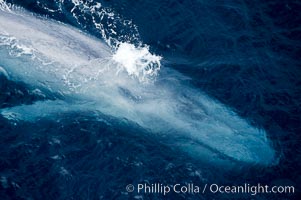
Blue whale. The sleek hydrodynamic shape of the enormous blue whale allows it to swim swiftly through the ocean, at times over one hundred miles in a single day.
Species: Blue whale, Balaenoptera musculus
Location: La Jolla, California
Image ID: 21266
Species: Blue whale, Balaenoptera musculus
Location: La Jolla, California
Image ID: 21266
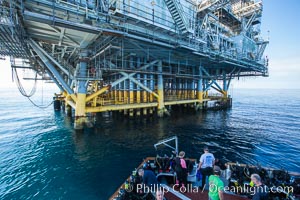
Scuba Divers at Oil Rig Eureka, 8.5 miles off Long Beach, California, lies in 720' of water.
Location: Long Beach, California
Image ID: 31089
Location: Long Beach, California
Image ID: 31089
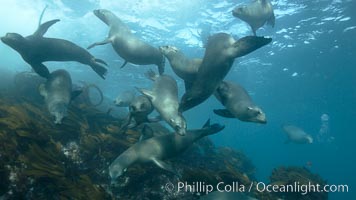
California sea lions, underwater at Santa Barbara Island. Santa Barbara Island, 38 miles off the coast of southern California, is part of the Channel Islands National Marine Sanctuary and Channel Islands National Park. It is home to a large population of sea lions.
Species: California sea lion, Zalophus californianus
Location: Santa Barbara Island, California
Image ID: 23453
Species: California sea lion, Zalophus californianus
Location: Santa Barbara Island, California
Image ID: 23453
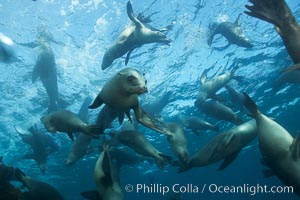
California sea lions, underwater at Santa Barbara Island. Santa Barbara Island, 38 miles off the coast of southern California, is part of the Channel Islands National Marine Sanctuary and Channel Islands National Park. It is home to a large population of sea lions.
Species: California sea lion, Zalophus californianus
Location: Santa Barbara Island, California
Image ID: 23458
Species: California sea lion, Zalophus californianus
Location: Santa Barbara Island, California
Image ID: 23458
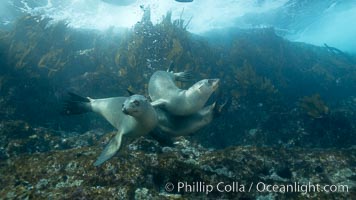
California sea lions, underwater at Santa Barbara Island. Santa Barbara Island, 38 miles off the coast of southern California, is part of the Channel Islands National Marine Sanctuary and Channel Islands National Park. It is home to a large population of sea lions.
Species: California sea lion, Zalophus californianus
Location: Santa Barbara Island, California
Image ID: 23474
Species: California sea lion, Zalophus californianus
Location: Santa Barbara Island, California
Image ID: 23474
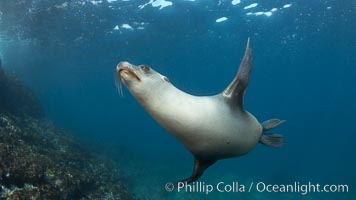
California sea lion, underwater at Santa Barbara Island. Santa Barbara Island, 38 miles off the coast of southern California, is part of the Channel Islands National Marine Sanctuary and Channel Islands National Park. It is home to a large population of sea lions.
Species: California sea lion, Zalophus californianus
Location: Santa Barbara Island, California
Image ID: 23475
Species: California sea lion, Zalophus californianus
Location: Santa Barbara Island, California
Image ID: 23475
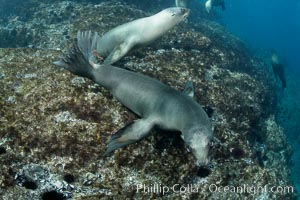
California sea lions, underwater at Santa Barbara Island. Santa Barbara Island, 38 miles off the coast of southern California, is part of the Channel Islands National Marine Sanctuary and Channel Islands National Park. It is home to a large population of sea lions.
Species: California sea lion, Zalophus californianus
Location: Santa Barbara Island, California
Image ID: 23479
Species: California sea lion, Zalophus californianus
Location: Santa Barbara Island, California
Image ID: 23479
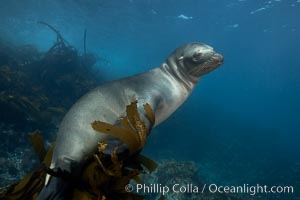
California sea lion, underwater at Santa Barbara Island. Santa Barbara Island, 38 miles off the coast of southern California, is part of the Channel Islands National Marine Sanctuary and Channel Islands National Park. It is home to a large population of sea lions.
Species: California sea lion, Zalophus californianus
Location: Santa Barbara Island, California
Image ID: 23485
Species: California sea lion, Zalophus californianus
Location: Santa Barbara Island, California
Image ID: 23485
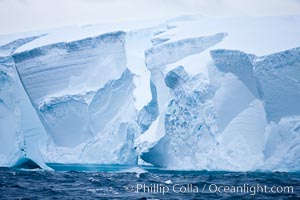
Tabular iceberg. The edge of a huge tabular iceberg. Tabular icebergs can be dozens or hundreds of miles in size, have flat tops and sheer sides.
Location: Scotia Sea, Southern Ocean
Image ID: 24793
Location: Scotia Sea, Southern Ocean
Image ID: 24793
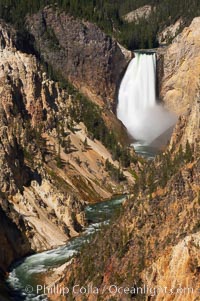
The Lower Falls of the Yellowstone River drops 308 feet at the head of the Grand Canyon of the Yellowstone. A long exposure blurs the fast-flowing water. The canyon is approximately 10,000 years old, 20 miles long, 1000 ft deep, and 2500 ft wide. Its yellow, orange and red-colored walls are due to oxidation of the various iron compounds in the soil, and to a lesser degree, sulfur content.
Location: Grand Canyon of the Yellowstone, Yellowstone National Park, Wyoming
Image ID: 13339
Location: Grand Canyon of the Yellowstone, Yellowstone National Park, Wyoming
Image ID: 13339
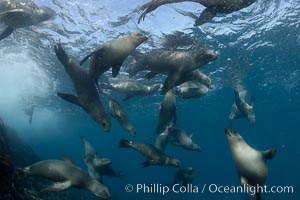
California sea lions, underwater at Santa Barbara Island. Santa Barbara Island, 38 miles off the coast of southern California, is part of the Channel Islands National Marine Sanctuary and Channel Islands National Park. It is home to a large population of sea lions.
Species: California sea lion, Zalophus californianus
Location: Santa Barbara Island, California
Image ID: 23490
Species: California sea lion, Zalophus californianus
Location: Santa Barbara Island, California
Image ID: 23490
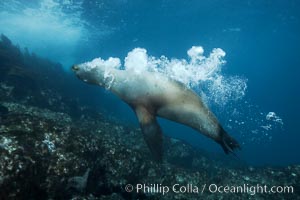
California sea lions, underwater at Santa Barbara Island. Santa Barbara Island, 38 miles off the coast of southern California, is part of the Channel Islands National Marine Sanctuary and Channel Islands National Park. It is home to a large population of sea lions.
Species: California sea lion, Zalophus californianus
Location: Santa Barbara Island, California
Image ID: 23493
Species: California sea lion, Zalophus californianus
Location: Santa Barbara Island, California
Image ID: 23493
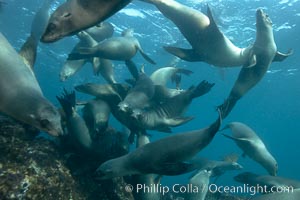
California sea lions, underwater at Santa Barbara Island. Santa Barbara Island, 38 miles off the coast of southern California, is part of the Channel Islands National Marine Sanctuary and Channel Islands National Park. It is home to a large population of sea lions.
Species: California sea lion, Zalophus californianus
Location: Santa Barbara Island, California
Image ID: 23504
Species: California sea lion, Zalophus californianus
Location: Santa Barbara Island, California
Image ID: 23504
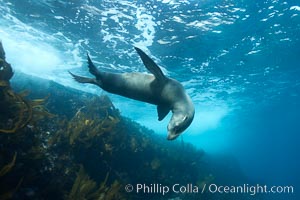
California sea lion, underwater at Santa Barbara Island. Santa Barbara Island, 38 miles off the coast of southern California, is part of the Channel Islands National Marine Sanctuary and Channel Islands National Park. It is home to a large population of sea lions.
Species: California sea lion, Zalophus californianus
Location: Santa Barbara Island, California
Image ID: 23518
Species: California sea lion, Zalophus californianus
Location: Santa Barbara Island, California
Image ID: 23518
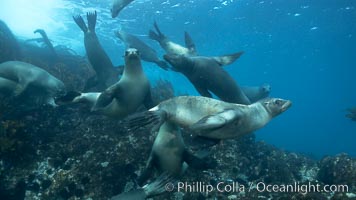
California sea lions, underwater at Santa Barbara Island. Santa Barbara Island, 38 miles off the coast of southern California, is part of the Channel Islands National Marine Sanctuary and Channel Islands National Park. It is home to a large population of sea lions.
Species: California sea lion, Zalophus californianus
Location: Santa Barbara Island, California
Image ID: 23519
Species: California sea lion, Zalophus californianus
Location: Santa Barbara Island, California
Image ID: 23519